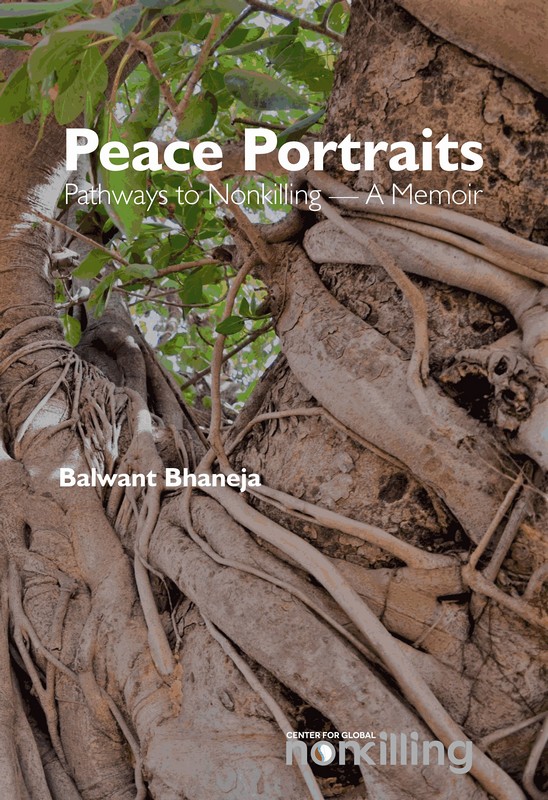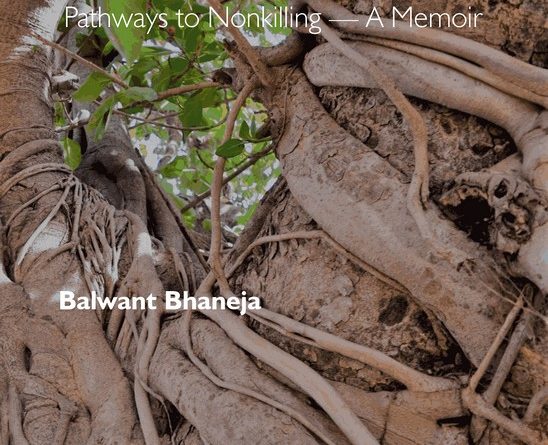Sandy Hill resident Balwant Bhaneja’s new memoir
Book Review
Maureen Korp
Most humans do not kill. Simply stated, that is the truth. Were it otherwise, by now we would be extinct. Yet, here we are. The human population is larger today than at any time in the past. Such simple truths underscore the careful narration of Peace Portraits: Pathways to Nonkilling – A Memoir.
Peace Portraits is the story of Balwant Bhaneja’s encounters with five people whose lives are singular commitments to “nonkilling.” Bhaneja is a long-time Sandy Hill resident, a retired Canadian Foreign Service officer (1976-2003), born in India, educated in Canada and the UK. Friends and neighbours know him as “Bill.”
What is “nonkilling?” The reader might think the word itself a clumsy translation of some other word from some other language. No, not so. Balwant Bhaneja understands the term to mean a commitment to building societal structures that facilitate peace, for example departments of peace, not of war. He credits the coinage of the word to Glenn D. Paige (1929Ð2017), one of the five people whose ideas and deeds are outlined in Peace Portraits. The other four are: Mahatma Gandhi (1869Ð1948), Sri Sathya Sai (1926Ð2011), Mairead Corrigan Maguire (1944Ð), and Lester B. Pearson (1897Ð1972). Maguire and Pearson are Nobel Peace Prize laureates. Bhaneja has met them all. How did that happen? In Peace Portraits, we read those stories and more. All five have informed and shaped Bhaneja’s commitment to nonkilling.
From 1969 to 1971, Balwant Bhaneja was a Carleton University graduate student in the School of International Affairs. Lester B. Pearson was his professor. Pearson’s 1957 Nobel laureate speech was assigned reading for his students. Bhaneja has kept his copy close at hand all these years. In Chapter 2, he discusses four aspects of Pearson’s 1957 text and its contemporary relevance.
Balwant Bhaneja was only six years old in 1947 when his father took him to a prayer meeting. People were gathering at Birla House in New Delhi to hear Mahatma Gandhi speak. A few weeks later, in that very same place, Gandhi would be murdered. Were the Mahatma’s teachings lost? No. In Chapter 1, Bhaneja discusses what he may have sensed as a six-year-old in the presence of the Mahatma.
Balwant Bhaneja is of Hindu heritage. When his parents and best friend died, Bhaneja returned to India to mourn their deaths. At his father’s bedside, he found one of Sri Sathya Sai Baba’s books. It became his introduction to Sai Baba. In Chapter 4, we read a vivid, warm description of that meeting and of Sai Baba’s ashram. His followers are found today worldwide.
Balwant Bhaneja first came in contact with Glenn D. Paige, a political scientist at the University of Hawaii, after reading one of his books and writing to him. In Chapter 3, we read of Paige’s research and the work of his Center for Global Nonkilling. The Center facilitates symposia and conferences globally. It was at the first global nonkilling conference in 2007 when Bhaneja met Nobel laureate Mairead Corrigan Maguire, one of the founders of Peace People, a peace organization of Northern Ireland. We read of her story and work in Chapter 5.
Might Canada become a nonkilling land? Most of us do not kill others. Might there be, one day, a Canadian Department of Peace in this land of peacekeepers? Balwant Bhaneja believes it can happen. In Hindi “Balwant” means “courage.” Peace Portraits is a little book – one to be read, read again, and discussed with others. Each chapter includes a pertinent bibliography.

by Balwant Bhaneja
Creighton University,
Asian World Center,
Center for Global Nonkilling, 2022
